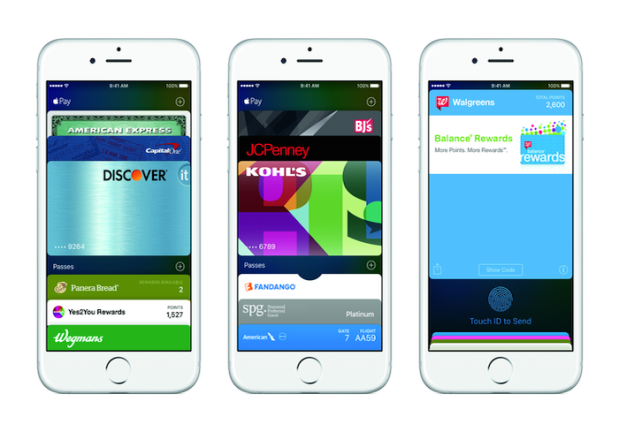Apple Pay Adoption: The Falling Side Of The Bell Curve

[vc_row full_width=”” parallax=”” parallax_image=””][vc_column width=”1/1″][vc_column_text]This time last year, the payments ecosystem was waiting. Everyone knew Apple’s payments play was eminent – but the details remained mysterious.
About a month later the mystery was over – Apple Pay was going to be tokenized, bio-authenticated, device-specific (to the newly released iPhone 6), NFC-based and premised on riding the regular payments rails. We found out that issuers were so giddy over being a part of this that they agreed to hand over a piece of their interchange fees but that merchants still had a decision to make about whether or not they really needed NFC tech.
Then we waited and speculated. Some opined that the launch of Apple Pay was going to be remembered as the moment that mobile payments went mainstream, others questioned if Apple’s broad and shallow ignition strategy was really going to be to able capture enough consumer loyalty or merchant interest to really make much of a dent in the marketplace. Once Apple Pay launched in late October, there wasn’t much to do but sit back, wait and watch the data roll in.
And there sure has been a lot of it – not of all of it necessarily in agreement. PYMNTS has been tracking Apple Pay adoption in conjunction with InfoScout, a retail data analytics firm that tracks consumer trends across merchants using receipt data.
The first round of figures came in as part of the post-Black Friday shopping post mortem – and the results were less than stellar for Apple Pay – when 91 percent of Apple Pay eligible customers (consumers in a store that accepted the service with a device capable of using it) had never so much as tried the service.
The situation had improved somewhat six months later – the PYMNTS/ InfoScout report released in March indicated that Apple Pay adoption was on the upswing, but still had a distance to climb.
The number of users that had at least tried Apple Pay had climbed to 15 percent. The study also demonstrated a high favorability rating among users who had tried the service and many noted that they used the service whenever they remembered (though many noted they often did not).
Now, summer is hitting its last quartile and the commerce system’s overachievers are in Chicago this week for PYMNTS R2 celebration of all things retail (and retail reinvention) the next round of numbers are out. And at first glance they do not seem to be good news for Apple Pay, which seems to have stalled on the climb.
Disturbing Declines
In March, survey data indicated that 15.1 percent of eligible Apple Pay users had tried the service – when surveyed in June 2015 that had fallen to 13.1 percent.
Usage fell as well – when asked in March, “Did you use Apple Pay on this transaction,” 39.3 percent of consumers said yes. When asked the same question in June, only 23 percent replied in the affirmative.
“These are people who have tried it, who just had a chance to use it because they were at their phone and were at a merchant who accepted it – but they just didn’t choose to use Apple Pay,” Jared Schrieber, CEO of InfoScout, told the assembled at R2 while explaining the figures.
But here’s the killer stat. Apple Pay also seems to have seen a dip in its committed users.
In March, 48 percent of iPhone 6 consumers in a store where they could use Apple Pay did. In June, that number had dropped to 33 percent.
“Am I surprised? Not really,” remarked Karen Webster, PYMNTS.com CEO. “When Apple Pay launched, it did so with constraints on the user side – had to have the iPhone 6 – and the merchant side – had to have an NFC terminal – and nothing more than a way to pay as a consumer value proposition. When even the diehard early adopters didn’t go crazy for it at the start, it seemed a sure sign that their slog to ignition would only get harder. That’s certainly how it appears.”
Upsetting Upticks
While all the right numbers were going down, the most recent PYMNTS/InfoScout Apple Pay Transaction Tracker reports also indicate that the number of users who didn’t use Apple Pay because they just plain forgot increased, from 32 percent to 34 percent. That increase also throws some shade on a positive increase in the numbers that indicated the number of consumers who use Apple Pay “whenever they remember” has jumped from 34 percent to 42 percent.
Interestingly, increases in the number of consumers who were abstaining from Apple Pay entirely because they were concerned about security increased slightly from 15 percent to 19 percent. Also on the increase were the number of users who were reluctant to try it again due to fears about it working – up to 4 percent from 1 percent.
Also surprisingly on the rise was the number of consumers abstaining from Apple Pay because they just aren’t sure how it works – now at 34 percent, up from 31 percent in March.
“People don’t understand why it is they would go about using Apple Pay, they are fine with what they have. And they are not familiar with how they would use Apple Pay if they wanted to,” Schrieber noted.
Apple Pay Doesn’t Sell Phones
Apple, it should be noted, is in the business of selling devices, not payments platforms, and the PYMNTS/InfoScout report demonstrates fairly clearly that on that score, Apple checks the box. Apple had sold a little over 136.6 million iPhone 6’s in 2015; by June that number had climbed to 184.1 million. The decline in the number of users is, in many respects, the sign of an addressable market getting bigger, but not all that many people are really that psyched about the phone as a new payments form factor.
When asked why they purchased an iPhone 6, despite the hoopla at WWDC and the Apple iPhone 6 launch over Apple Pay, only 3 percent noted Apple Pay as the reason they bought an iPhone 6. Screen size and camera where the leading reasons – with the majority of respondents picking one of those two.
“As more and more people buy iPhone 6’s, we are seeing a lower percentage of them adopting or trying Apple Pay. That shouldn’t necessarily be a surprise as we move from people who are early adopters and more likely to try things, to later adopters who are not,” Schrieber noted.
The iPhone 6 is an undeniable hit – but so far Apple Pay is not. Some users like it and use it regularly – but the data thus far indicates that a far, far larger number are willing to sit out paying the Apple way for now, and the immediate future.
“Over the course of our conference these last two days, merchants kept talking about making decisions about new terminals because they don’t want to miss out on new payments innovations like Apple Pay,” Webster commented. “These stats seem to throw a bit of cold water on the notion that Apple Pay will be the rising tide that lifts all NFC mobile payments boats.”
Reactions In The Room
So what can we learn from Apple Pay’s stall in in-store mobile payments?
“Paying for something at a counter in a store isn’t broken – Apple Pay was ‘fixing’ a pain point that doesn’t exist for consumers,” Webster said.
“There’s plenty of friction associated with the in-store shopping experience, but after consumers have wandered through the store, picked out what they want to buy and then stood in line if all they get to do at checkout at a few of the stores they shop is use a phone instead of a card that works everywhere, what’s the point? That’s what consumers are telling us based on these results.”
The news certainly led to interest on the panel, as few of the participants were really all that surprised by the result. Chris Gardner, CEO of Paydiant, a mobile payments platform which was recently acquired by PayPal, noted that while he likes Apple Pay and finds it to perform as advertised, he thinks that the market has to learn that launching mobile payments isn’t really just about the payment, which he described as “the domain of nerds.”
“I can’t say I’m surprised either. We’re competing with 50 years of muscle memory and if we’re just swapping a swipe for tap, you’re only going to get the nerds like me to jump on board,” Gardner told the crowd.
“What we are realizing is it’s going to take more than just payments to effect a behavior change.”
LoopPay CEO Will Graylin concurred, noting that payments is a foundation, and without having it completely nailed down, no platform has any hope. In Apple’s case, Graylin noted, merchant acceptance wasn’t there from the beginning, and it is very hard to build a sticky system if there is no place for consumers to get in the habit of using it.
“Until you address that fundamental problem of acceptance, you just aren’t going to get consumer adoption,” Graylin said. “The proof is in the pudding, as they say. This data doesn’t surprise me – but the amount it dropped – 48 percent to 33 percent, is much more than I thought.”
Mostly, however, the panel concurred, that the Apple numbers — as disheartening as Apple might find them to be — actually contained an important lesson.
“I think the biggest takeaway that I see from current Apple Pay adoption is sort of immense obviousness around what mobile payments should look like,” LevelUp Chief Ninja Seth Priebatsch noted on the results. “We look at 3 percent, we look at 4 and 5 percent usage we look at these very small subsets of subsets of merchants and consumers.”
“Then we look at Starbucks. And they’re at 20 percent usage now, they are going to be at 21 percent next month and 22 percent the month after that. And the formula is not massively complicated. It’s merchants giving consumers something they can mostly all use and give them some reason to use it that is better than replacing a very, very fast interaction with a marginally faster interaction.”
It seems for all the hype, Apple has yet to find a way to deliver that something extra that Starbucks is delivering so well. That is not to say they won’t, but until they do, it is hard to imagine these numbers will improve much by the next PYMNTS/InfoScout report.[/vc_column_text][/vc_column][/vc_row][vc_row full_width=”” parallax=”” parallax_image=””][vc_column width=”1/1″][vc_separator color=”grey” align=”align_center” style=”” border_width=”” el_width=””][vc_single_image image=”149616″ alignment=”center” style=”vc_box_shadow_3d” border_color=”grey” img_link_large=”” img_link_target=”_blank” css_animation=”left-to-right” img_size=”full” link=”http://www.pymnts.com/apple-pay-adoption/”][vc_column_text css_animation=””]
For more news on Apple Pay adoption, click here.
[/vc_column_text][vc_separator color=”grey” align=”align_center” style=”” border_width=”” el_width=””][/vc_column][/vc_row]
